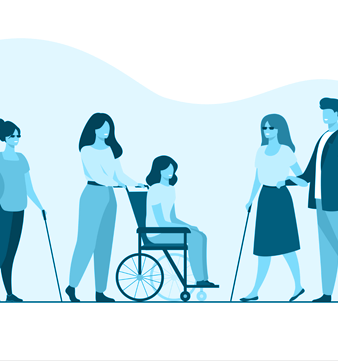
There’s no denying the power of video communication in today’s workplace. However, video is not consumed the same by every person. While an individual may have headphones and a minute to sit down, another may be watching on a crowded bus. And with one in four Americans living with a disability, it is imperative every business, and even more so every healthcare facility, create video content that is ADA Compliant.
WHAT IS ADA COMPLIANCE?
The Americans with Disabilities Act (ADA) is a federal rights law first enacted in 1990, which prohibits the discrimination of individuals on the basis of disability. Standards of Accessible Design, revised and published back in 2010 by the Department of Justice, states all electronic and information technology must be accessible to people with disabilities.
Click here to review Cyrano’s ADA Compliance Checklist
WHAT CYRANO OFFERS
The best way to ensure your organization is accessible to individuals with disabilities is to make sure all video content has closed captions for d/Deaf and hard-of-hearing viewers. Cyrano transcription services enable customers with features that help establish and meet ADA compliance, including:
- Closed Captions which mirror the video’s audio.
- Edit any spelling or punctuation errors in a transcript.
- Download video content with Closed Captions burned into the mp4 file.
- The ability to review and download a full transcript.
- A complete look at the transcript’s timestamp for pinpoint accuracy.
- Provide an intuitive viewer experience through the CyranoAPP.
- A user-friendly media player which is compatible with your audiences’ devices.

Cyrano’s Transcription Services
RISKS OF NON-COMPLIANCE
A first ADA violation can result in fines of up to $75,000 and with additional violations increasing to upwards of $150,000. State and local governments may allow additional fines and require businesses to meet a higher standard of accessibility than the ADA requires.
But more importantly, an organization’s noncompliance risks the perception they do not pay attention to the needs of their patients and staff. Closed captioning and accessible content are not only legally required for some, they are becoming the basic practice for all.
